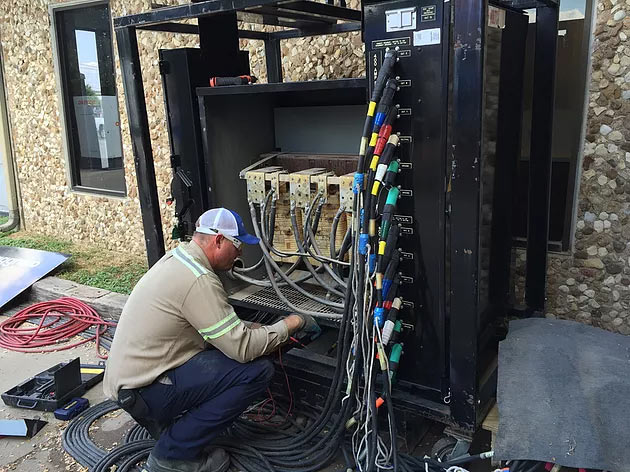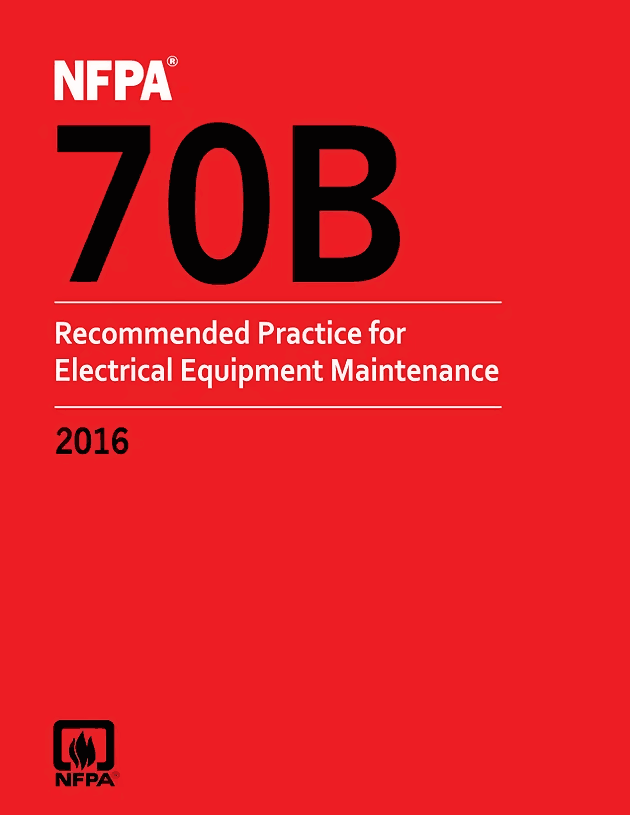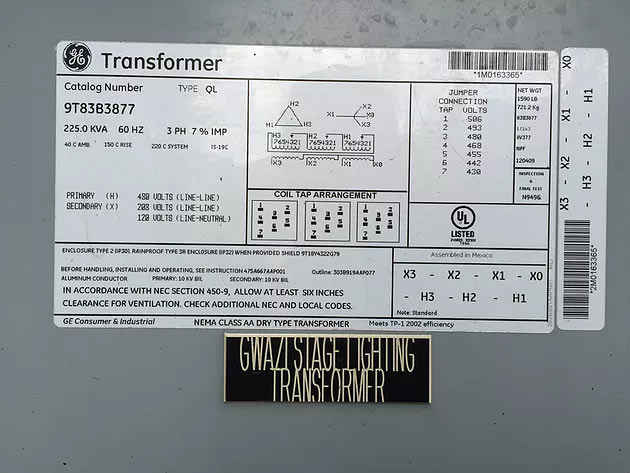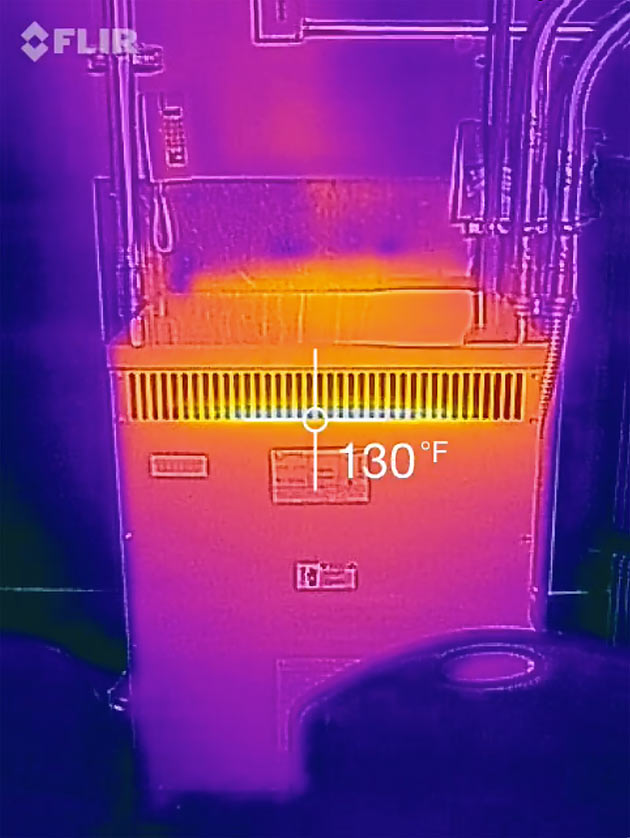I was once working on a film set when a feeder transformer began behaving badly. A supplier had dropped off a generator and the transformer, and after they were both connected and energized, but before any load was even connected, much less turned on, the transformer was humming loudly. In my experience, that could mean one of two things: either the transformer has a high harmonic load, or it is dying a long, slow death. Since there was no load connected in this case, it seemed apparent that this particular transformer was not long for this world.
A call was made to the supplier, and within an hour or two, a tech showed up on set with meter in hand. After killing the generator, he took off the sheet metal shroud covering the internal works of the transformer and, although I didn’t see him touch the frame of the transformer, he said it was as hot as the muffler on his motorcycle. That’s another bad sign. Then he took out his meter, and that’s when I got very interested to see what he was going to do.
I’ve often seen and heard feeder transformers that seemed to be humming excessively, and I’ve also seen transformers that were very hot. It’s normal for feeder transformers to rise in temperature in proportion to the load they’re carrying, but excessive noise and heat are warning signs of pending failure. The question is, how much noise and heat is normal and what’s excessive? And if you suspect it’s excessive, what do you do about it?
I thought I was going to learn a secret of the trade when the tech broke out his meter. After all, he was a specialist in generators and transformers. What super-secret trick did he have up his sleeve that would instantly diagnose the problem with this feeder transformer using only a multimeter?
 A transformer that hums loudly and produces a lot of heat with no load connected to it is very likely failing. This power tech attempted a diagnosis after de-energizing the generator and transformer.
A transformer that hums loudly and produces a lot of heat with no load connected to it is very likely failing. This power tech attempted a diagnosis after de-energizing the generator and transformer.
Let’s just say my bubble of anticipation was popped in a very disappointing fashion. All he did was to check for a bond between the neutral and the ground. Sure, that’s important and it could save lives, but it tells you nothing about the health of a transformer.
But in the end, he just called the shop and had a replacement transformer delivered. My curiosity was never so dissatisfied as it was on that day. But that episode drove me to do further research, which continues to this day. I’ve looked through engineering books, lighting books, and I’ve talked to friends. And one of the best resources I’ve found on the subject comes from what I would have not expected, which is the NFPA. They publish the NFPA 70B: Recommended Practice for Electrical Equipment Maintenance. It’s filled with all kinds of interesting information, including some case histories with photos and stories.
 NFPA 70B contains a lot of very useful information that can be used to help prevent failure of electrical apparatus and prevent accidents.
NFPA 70B contains a lot of very useful information that can be used to help prevent failure of electrical apparatus and prevent accidents.
The health of electrical apparatus matters because it is inextricably linked to safety, and here’s the thing about transformers; they can fail silently or they can fail catastrophically. Electricity is energy, and the further upstream you go in a power distribution system, the bigger the conductors and the more energy there is that can potentially be released in the event of a failure. A transformer can develop an open circuit, in which case it just stops working, or it can short circuit, in which case a huge amount of energy can be released at once, resulting in an arc flash or a fire.
According to one of the case histories in NFPA 70B, a transformer in a hospital failed and caused $130,000 worth of fire damage when it was less than five years old. The cause of the failure is not specified, but it turns out that the electrical contractor added cooling fan kits to the transformer after the initial installation. That led to speculation that it could have been overloaded, maintained improperly, or it might have had loose connections. It goes on to say that, “insurance company case study reports indicate 52% of transformer failures are preventable.”
How can you prevent such failures? That’s the raison ďêtre for the NFPA 70B; to help reduce hazards due to the malfunction of electrical apparatus by establishing an effective electrical preventive maintenance program.
You can buy the softbound version or the PDF version for $82 and you can also get free online access at the NFPA website. The 2016 edition has 35 chapters and 17 very useful appendices. Appendix L, for example, provides initial guidelines for maintenance and inspection intervals for electrical apparatus. It suggests that dry-type transformers, which is typically the type we use for feeder transformers in performance spaces, should be cleaned, inspected, and tested every two years, power cables should be inspected annually and tested every one to three years, and disconnects should be visually inspected, cleaned, and operationally tested annually. These are only guidelines for a jumping off point, and the appendix stresses that environmental and operating conditions might dictate a different frequency of maintenance and inspection. A company switch in a theatre, for example, is operated almost every time a touring company uses the space, so an annual operation check may not be necessary unless it’s been idle for that long.
As far as feeder transformers go, Chapter 21 of 70B covers power and distribution transformers, and Section 23.3.1 covers drytype transformers in particular. It says that transformers should be inspected at “regular intervals based on the importance of the transformer, the operating environment, and the severity of the load conditions.” The nameplate rating will provide some useful information, including: the name of the manufacturer, the kVA rating, frequency, primary and secondary voltage, impedance of the transformer (only for 25 kVA and larger transformers), required clearance (if vented), the temperature class of the insulation, the ambient temperature rating, and the rise temperature.
 The nameplate on a feeder transformer provides a lot of useful information about the operating conditions of the device including the kVA, frequency, primary and secondary voltages, impedance, clearance, class of insulation, ambient temperature rating, rise temperature, and more.
The nameplate on a feeder transformer provides a lot of useful information about the operating conditions of the device including the kVA, frequency, primary and secondary voltages, impedance, clearance, class of insulation, ambient temperature rating, rise temperature, and more.
The ambient temperature rating is the maximum air temperature around the transformer for which it is fully rated. If the ambient temperature exceeds the rated temperature, then the transformer should be de-rated accordingly. The rise temperature is the maximum temperature above the ambient temperature that the transformer should operate under load. Should the rise temperature be exceeded, then the insulation will begin to deteriorate and the transformer will fail sooner or later, depending on the severity of the conditions.
As with any power distribution equipment, precautions should be taken to protect against the hazards involved and only qualified personnel should endeavor to undertake an electrical inspection and the proper PPE should be used according to NFPA 70E: Standard for Electrical Safety in the Workplace. NFPA 70B says you can perform an external visual inspection without de-energizing the transformer, but “if any procedure more extensive than (an external visual inspection) is to be performed, the first precaution that should always be taken is to de-energize the transformer.” Of course, that’s not always practical or even possible, but if you can de-energize it, you should perform a lockout procedure “followed immediately by a test to ensure that the equipment is de-energized.” It should also be grounded according to NFPA 70B Article 7.2 in order to protect against induced voltage from nearby conductors, inadvertent re-energizing of the equipment, lightning strikes, stored charges from capacitors or other equipment, or any accident that might cause the conductors to become energized.
If you are able to de-energize the equipment, then “the transformer case should be regarded as energized until the case-ground connection is inspected and found to be connected and secure.” Then and only then, can you remove the enclosure covers and perform a more extensive inspection. In that case, you would look for: accumulation of dirt on windings or insulators; restricted cooling airflow; discoloration caused by overheating; electrical tracking or treeing and carbonization; cracked or chipped insulators; loose insulators, clamps, or coil spacers; deterioration of barriers, corroded or loose electrical connections; and loose support or restraint of electrical control wiring.
If you can’t de-energize the transformer, then you can perform an external visual inspection and you can also use an infrared camera or infrared thermometer to perform an infrared inspection. These tools can be used to find hot spots that may exceed the temperature rating of the insulation on the conductors, connectors, or any other components in the path of the current.
Section 11.17 in 70B covers infrared inspection. As it says, electrical equipment like transformers can be difficult to scan without removing the covers because infrared radiation is blocked by metal housings. But if a transformer is running hot, the heat will transfer to the case and it will measure hotter than an equivalent sized transformer with a similar load. Also, transformer cases sometimes have small vents through which you can get a direct line of sight to the chassis or the windings. If that’s the case, you should take precautions against arc flash and arc blast.
 An infrared camera can uncover hot spots in electrical apparatus that could indicate pending failure. If the equipment can’t be de-energized for an IF scan, you can still get clues about the health of the apparatus.
An infrared camera can uncover hot spots in electrical apparatus that could indicate pending failure. If the equipment can’t be de-energized for an IF scan, you can still get clues about the health of the apparatus.
In order to get an accurate temperature reading, the transformer should be loaded at least 40% or higher and the readings should be documented. If you can take readings of the windings under load, Section 11.17.5.6 spells out the remedies for deviations in “normal referenced temperature.” It says that if the measured temperature is: 1° C to 3° C higher than normal, it indicates “possible deficiency” and “warrant(s) investigation;” a measured temperature 4° C to 15° C higher than normal indicates a deficiency and “repairs should be made as time permits;” and a measured temperature over 16° C higher than normal indicates a “major deficiency” and “repairs should be made as soon as possible.”
If everything looks okay, you should measure the current and voltage at peak load, and records should be kept to provide a means of comparison with previous readings. Depending on the circumstances, it might be difficult or impossible to take measurements or to take them at peak load. But the closer to peak load you can get, the more telling your results will be.
Transformers can be rewound and repaired as long as they don’t fail catastrophically. If you pay attention to the clues, use your senses and your tools to find problems before they get out of hand, and make the necessary repairs in time, then you can not only save downtime and money, but you could also help save lives.




That’s good to know that the closer you are to the peak load the better the results would be. That sounds like you would want to test it while running all your appliances and stuff. I’ll have to remember that if I ever need someone to come to look at the transformer.
It was mentioned that the electrical apparatus is important because it is the part that is linked to safety. Is there a way to monitor the temperature of the apparatus, so that you can be notified once it becomes higher than it should be? I will have to mention this article to my brother, as he has always been interested in this type of thing.
We appreciate the feedback. Thank you for reading!
We don’t know of any device that will continuously monitor individual components and send out a notification.
I am glad you could test the transformer to see if it will last a long time or not. I want to get one. But only if I can ensure it will live a long life.